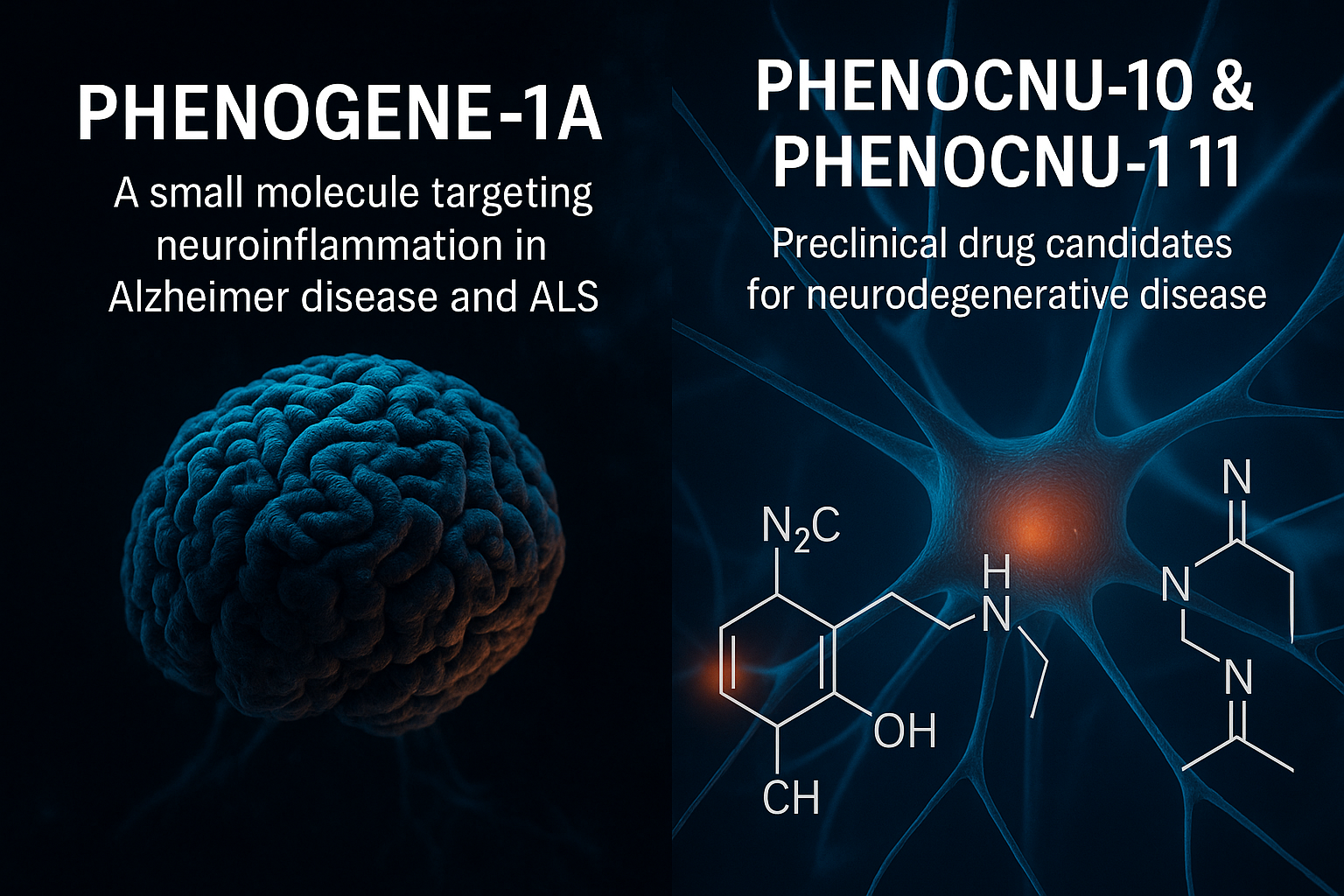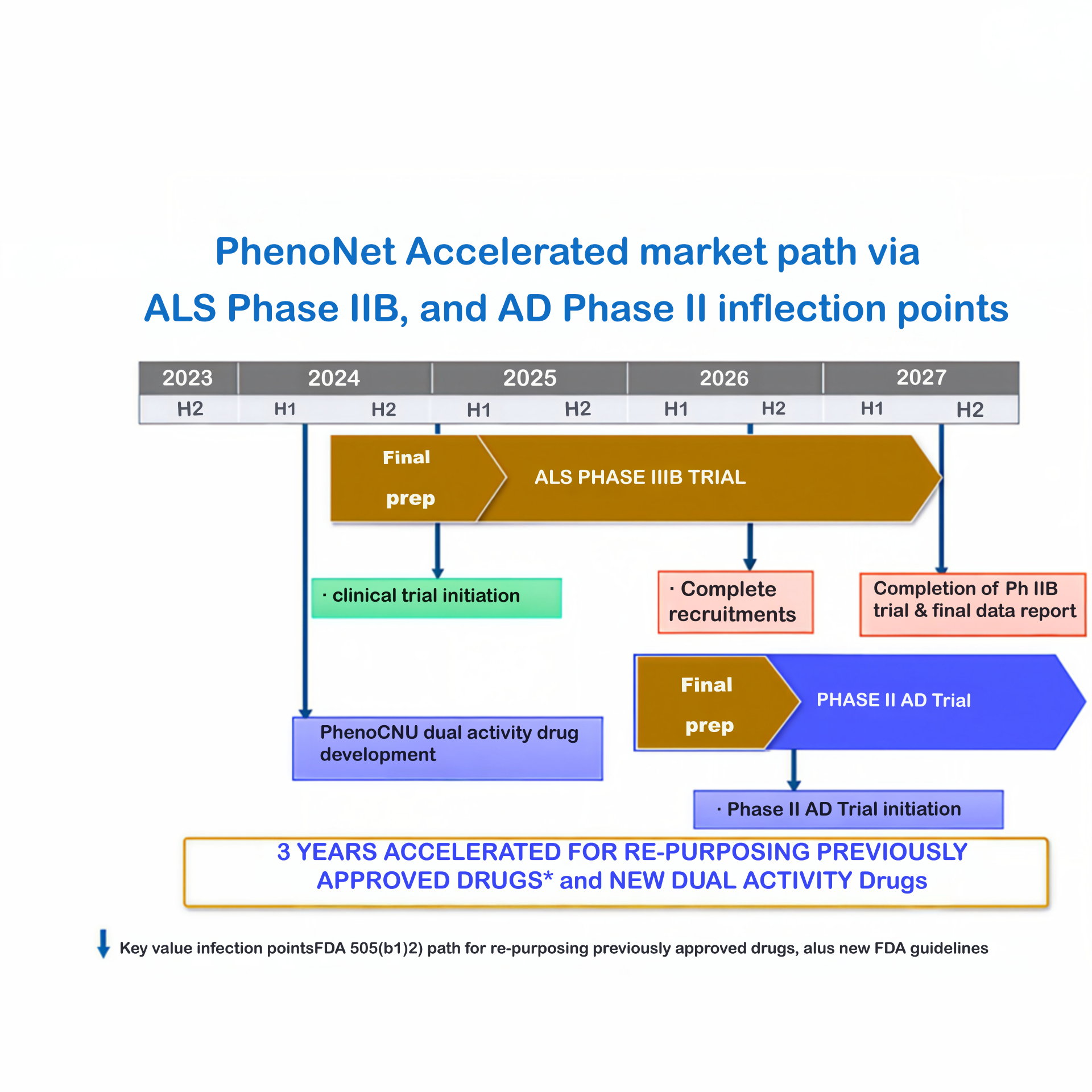AD & ALS TREATMENT
PIPELINE
The Therapeutic Mechanism of PHENOGENE-1A
GENERAL MECHANISM:
PHENOGENE-1A is expected to reduce neuroinflammation through a unified, disease-agnostic program. Data suggest that it stabilizes mast cells, calms glial activation, and lowers key cytokines and chemokines, keeping microglia and astrocytes in a balanced, protective state. It can inhibit amyloid-β aggregation, and promotes neurite repair—disrupting the neuroinflammation, common to various neurodegenerative disorders.
ALZHEIMER DISEASE:
Early work suggests PHENOGENE-1A binds soluble Aβ42, curbs toxic oligomers, and boosts microglial plaque clearance, potentially sparing synapses and memory circuits.
AMYOTROPHIC LATERAL SCLEROSIS:
Pilot data indicate PHENOGENE-1A dampens glial cytokine overdrive, easing oxidative stress on motor neurons while encouraging axonal sprouting to slow motor decline.

Further Pipeline: Additional Candidates - PHENOCNU-10 and PHENOCNU-11
Beyond the primary programs, PHENOCNU-10 and PHENOCNU-11 are in early preclinical testing. Initial findings suggest they may limit amyloid-β and tau aggregation, while also dampening mitogen-activated protein (MAP) kinase and nuclear factor kappa B (NF-κB) activity—early drivers of inflammation.
In exploratory models, both compounds inhibited LPS-induced COX-2 and iNOS expression, markers of late-stage neuroinflammation.
Together, these data point to PHENOCNU-10 and PHENOCNU-11 as complementary candidates for neuroprotection and inflammation control in Alzheimer Disease, ALS, and related disorders.


